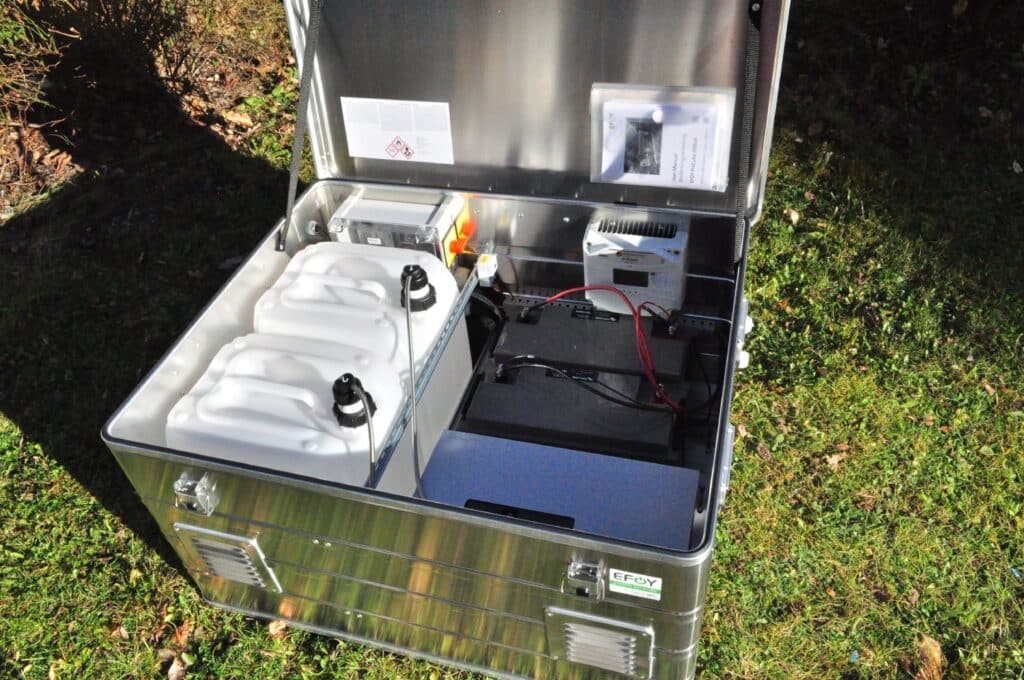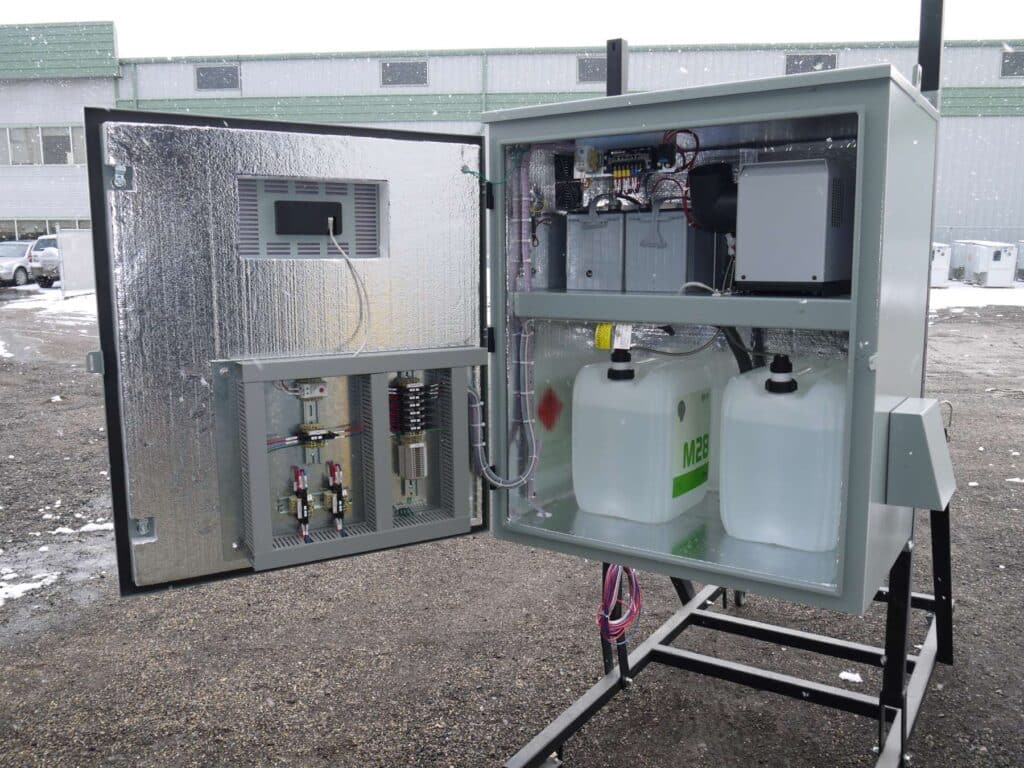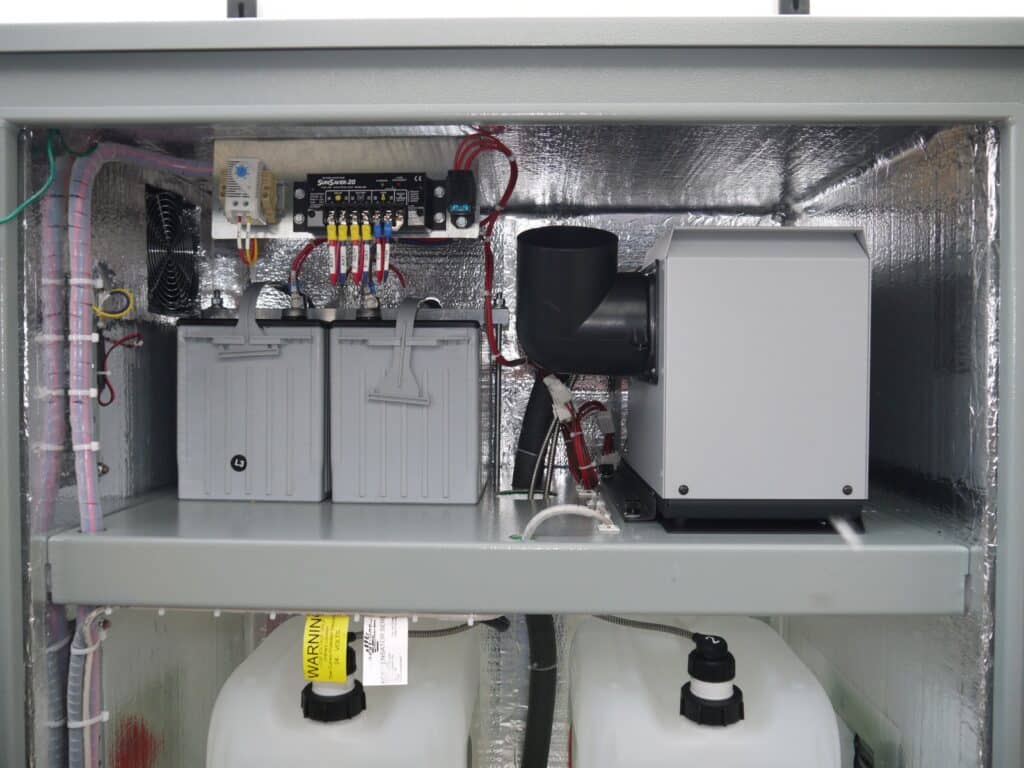Summary:
- EFOY fuel cells integrate renewable energy and fuel cell technology to power remote systems for years without refueling.
- This new, hybrid system shifts from fuel cells to solar energy to keep systems operating regardless of weather or time of day.
- Morningstar components were selected for the solar charge controllers for their unmatched reliability, advanced technology and competitive pricing.
Situation:
Generating electricity in very remote locations is always a challenge. Whether the application is telecommunications, environmental monitoring and wind measurement, security surveillance or similar, the instruments used require electricity 24/7 but may be miles—sometimes hundreds of miles—away from a viable grid. Because they are often in less accessible locations ranging from mountaintops to ocean platforms, they are beyond the reach of regular fueling and maintenance which rules out the use of generators. Since batteries have limited autonomy they are not a long-term solution, which is why remote power stations often rely on solar panels to augment battery power and keep systems up and running for months or even years in the field.
But some remote locations present difficulties for solar as well. Mountaintops, for example, often experience thick snowcover for much or all of the year, and ocean monitoring platforms are regularly exposed to overcast skies, bird droppings,and other conditions affecting available sunlight.
For these reasons, innovative solution providers are turning to another electrical-generating technology also originally developed for extended space missions: the fuel cell. One such company is SFC in Germany, whose EFOY line integrates both renewable energy and fuel cell technology into field-deployable hybrid energy packages capable of powering remote systems for years without refueling.
Project:

First-generation fuel cells used hydrogen gas, which, while efficient, was difficult to transport and store in bulky tanks, and use on-site safely. SFC’s innovative EFOY approach complete energy systems as compact as a mini-fridge and able to operate for years in the field, with refueling accomplished through easy-to-handle methanol cartridges.
Solution:

“[Morningstar’s] technology is up to date, where others struggle,” observes Stephan Laistner, Off-Grid Product Specialist at SFC Energy AG. “The TriStar offers easy handling, and the no-fan design means fewer parts that can break or struggle.”
Other product features, including 500W peak power, temperature sensing, and timer controllers, provide options to keep systems running without costly maintenance.
This hybrid system automatically shifts from fuel cells to solar energy to keep systems operating regardless of weather or time of day. Combined with the solar charge controller, this compact system uses both solar and fuel cell electricity sources to charge on-board storage batteries and ensure sufficient power under all operating conditions, with zero downtime.

As the need for security, networking, and data monitoring expands to every corner of the globe, expect to see more of these remarkable hybrid energy systems in the field powering the critical systems on which these applications depend. As these systems reach into increasingly challenging and inhospitable environments, Morningstar components will be there with them to make sure they continue to run with minimum human intervention.
Morningstar Corporation features examples of our products used by our customers across a wide variety of environments and systems, to highlight their flexibility, performance and dependability. Installation best practices and preferences can vary across diverse regions and applications, and the examples shown here are for general interest and not intended as a guide. Always consult local codes and refer to product installation manuals for correct requirements.
